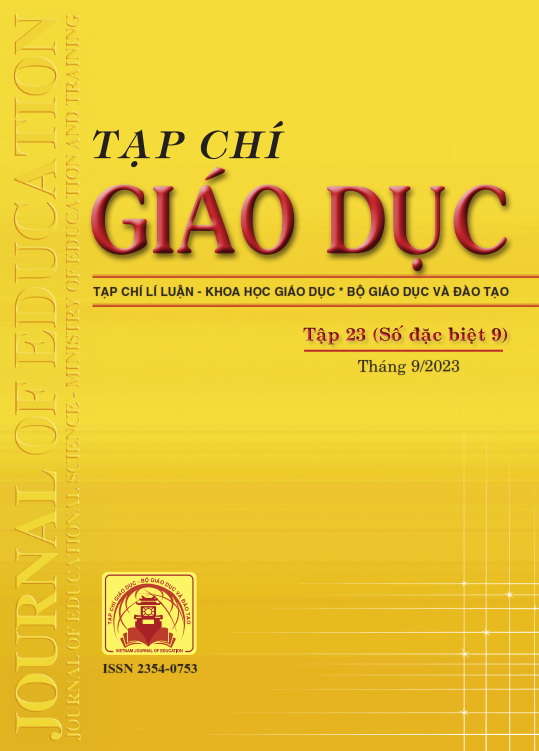Tác động của công nghệ thông tin đến học tập và đời sống xã hội của sinh viên dân tộc thiểu số
Tóm tắt
The development of telecommunications infrastructure, combined with the popularity of personal communication devices, has resulted in significant changes in the way people communicate and build social networks in Vietnam, particularly among adolescents. The internet's infiltration of schools by ethnic minority students has transformed their traditional learning culture. This study used an educational anthropology approach, with 20 interviews conducted for eight different ethnic groups in typical mountainous ethnic areas of Vietnam. The findings of the study provide scientific evidence for the speed and manner with which the Internet has permeated the learning worlds of ethnic minority children. They quickly changed their ethnic culture after studying on the internet. This study also points out the gaps that they still lack to improve the efficiency of scientific research based on the Internet.
Tài liệu tham khảo
Bộ Thông tin và Truyền thông, Trung tâm Internet Việt Nam (2022). Báo cáo tài nguyên Internet Việt Nam 2022. https://vnnic.vn/sites/default/files/whitebook/BaoCaoTainguyenInternet2022.pdf
Castells, M., & Cardoso, G. (Eds.), (2006). The network society: From knowledge to policy. Washington, DC: Johns Hopkins Center for Transatlantic Relations, 3-23.
Davis, F. D., Bagozzi, R. P., & Warshaw, P. R. (1989). User acceptance of computer technology: A comparison of two theoretical models. Management Science, 35, 982-1003.
Lai, P. C. (2017). The literature review of technology adoption models and theories for the novelty technology. Journal of Information Systems and Technology Management, 1, 21-38.
Nguyen, T. T. (2019). Several factors affect the income of Hoa rural households in Luc Ngan district, Bac Giang province. Journal of Ethnic Minorities Research, 8(3), 141-146.
Tapp, N., Michaud, J., Culas, C., & Lee, G. Y. (2004). Hmong/Miao in Asia. Silkworm Books.
Trần Hữu Sơn (2023). Mạng xã hội với vấn đề tuyên truyền ở vùng đồng bào dân tộc thiểu số. https://www.bienphong.com.vn/
mang-xa-hoi-voi-van-de-tuyen-truyen-o-vung-dong-bao-dan-toc-thieu-so-post460879.html
Trịnh Thị Hợp (2019). Tìm hiểu một số lí thuyết liên quan đến mô hình chấp nhận công nghệ. Tạp chí Khoa học, Trường Đại học Đồng Tháp, 36, 114-120.
Ủy ban Dân tộc, Tổng cục Thống kê (2019). Kết quả điều tra thu thập thông tin về hiện trạng Kinh tế - Xã hội của 53 dân tộc thiểu số năm 2019. NXB Thống kê.
We are Social (2022). Báo cáo tổng quan thị trường Digital Việt Nam năm 2022.
We are Social (2023). Báo cáo tổng quan thị trường Digital Việt Nam 6 tháng đầu năm 2023.
Wellman, B. (2001). Physical place and cyberplace: The rise of personalized networking. International Journal of Urban and Regional Research, 25(2), 227-252.
Đã Xuất bản
Cách trích dẫn
Số
Chuyên mục
Giấy phép

Tác phẩm này được cấp phép theo Ghi nhận tác giả của Creative Commons Giấy phép quốc tế 4.0 .












